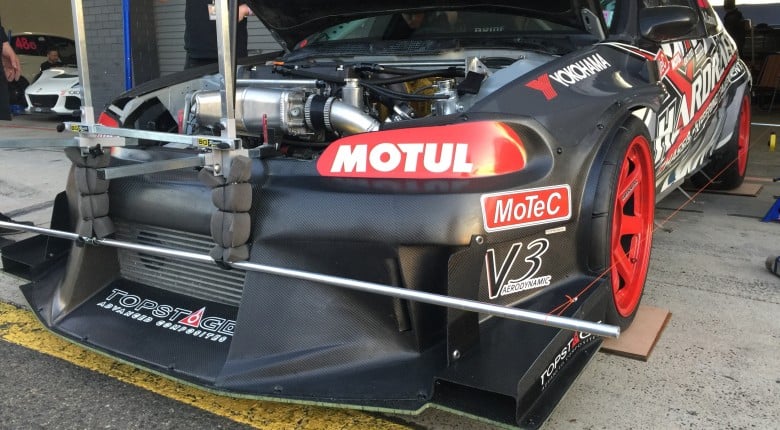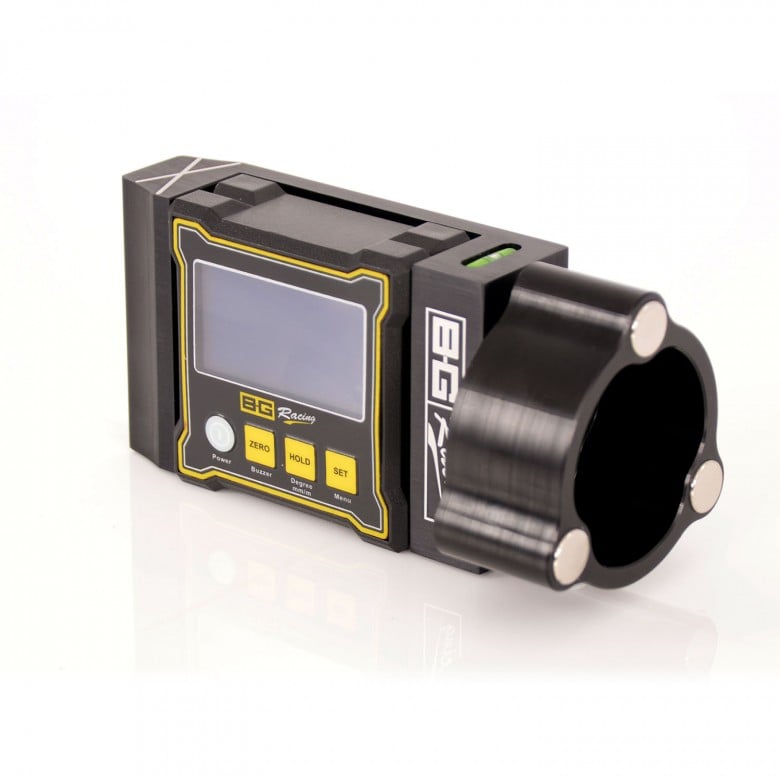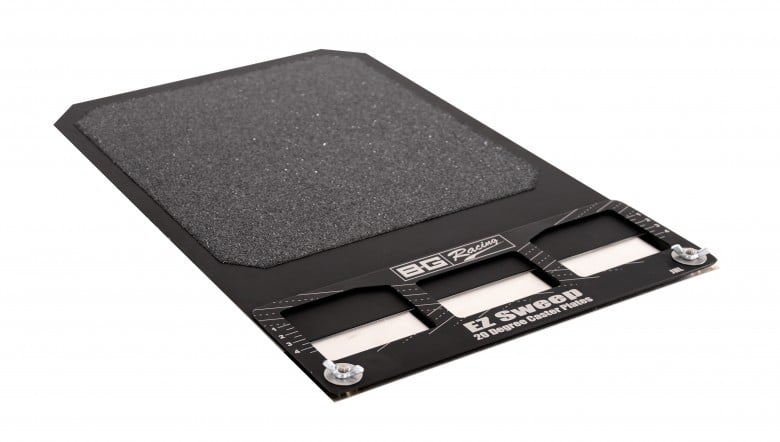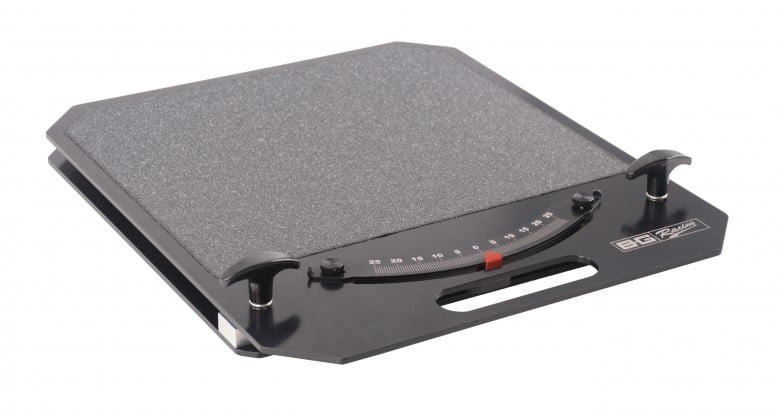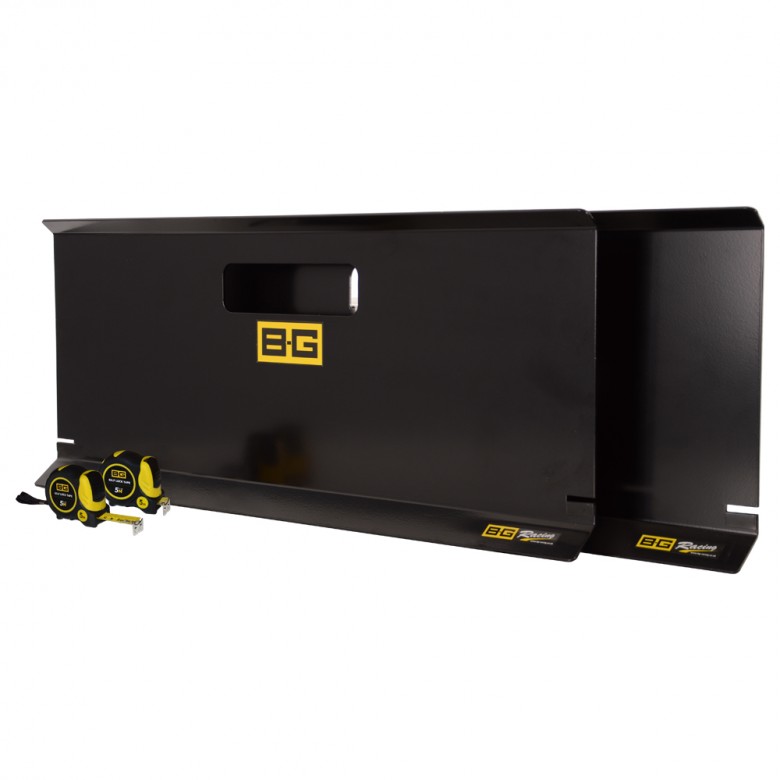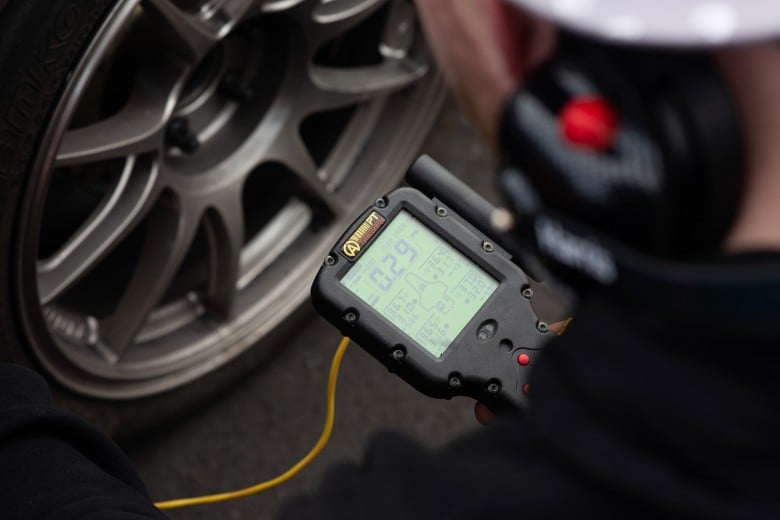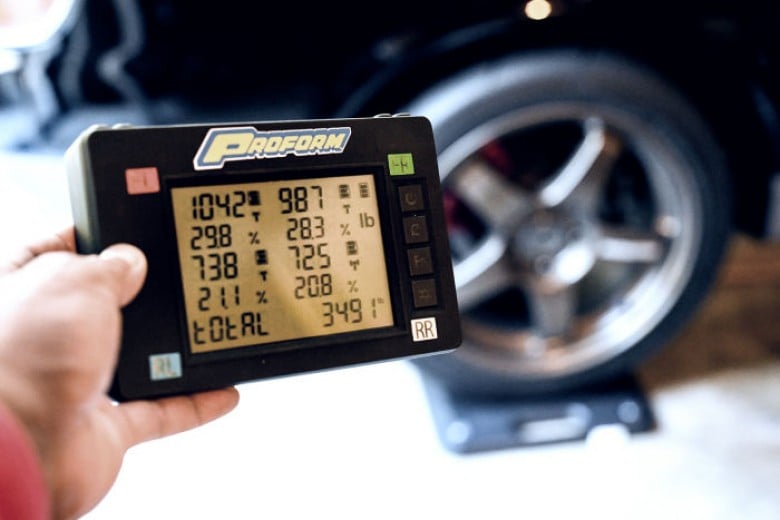When learning any new skill that requires specialist equipment, part of that learning process involves discovering what works, what doesn't, and how important some tools are in relation to others. Following on from our free, Introduction to Motorsport Wheel Alignments lesson here's a rundown on some of the equipment we used and discussed to help you get your bearings.
In this article: String Line Kit | Camber/Caster Gauge | Slip Plates | Turn Plates | Toe Plates | Tyre Probe | Corner Scales | Conclusion
Disclosure: We do not sell any of this equipment ourselves, our opinion is independent. Some of the links will go to general eBay and Amazon searches. We receive compensation if you purchase from them, but you are not obligated to do so and we highly recommend building a relationship with your local supplier where possible.
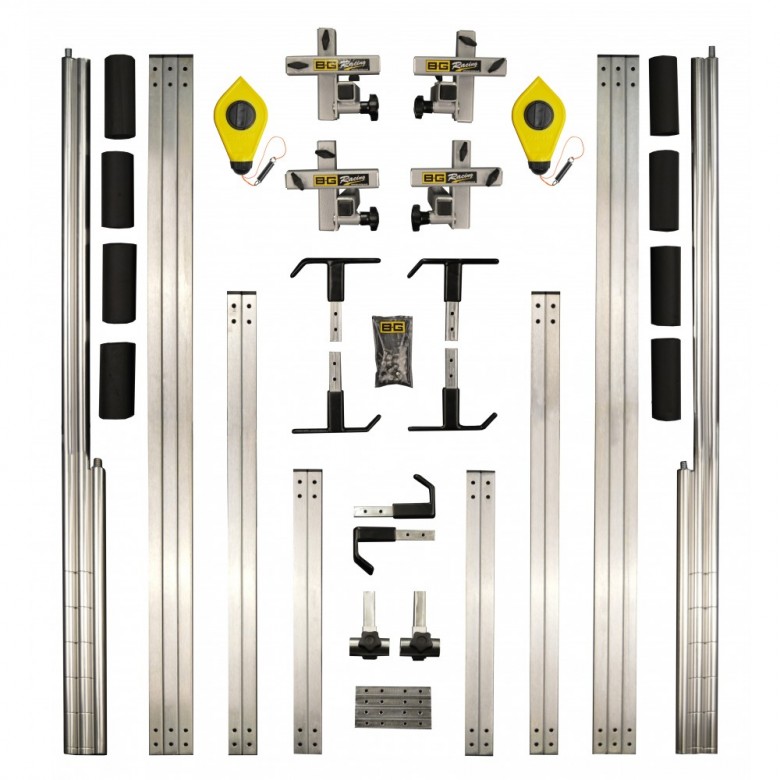
String Line Kit
String Lines are one of the easiest and most accurate way to achieve four-wheel alignment. The frames are fully adjustable to allow fitment to a wide range of cars and attach to the vehicle using the hooking feet which are interchangeable to all of the tubes in the kit.
Tim's Tip: You can make your own kit at home (covered in our course material) or purchase one ready-made. The tradeoff for the lower cost of making your own kit is a longer setup time.
Camber/Caster Gauge
One of the most frequent adjustments you will make to your vehicle's alignment setup will be the camber. Solutions for this range from iPhone apps (surprisingly accurate during our testing but not something we would solely rely on) to bubble and digital gauges which can measure camber, caster or both. We opt for a compact ‘2-in1’ option.
Tim's Tip: If you’re on a tight budget you will measure the camber much more than caster, so if you are only able to get a tool for one or the other, make sure it’s camber first and foremost (a camber frame is great for this!)
Slip Plates
When you jack your car off the ground, your wheels will turn inwards as the suspension droops. If you do not correct this, the car will sit higher than it should and all your alignment readings will be incorrect.
You can remove your alignment setup in order to roll the car back and forth. A better and faster option is to instead use slip plates which allow your suspension to slide back into the correct position when you lower your car back down to the ground in the first place.
Tim's Tip: This is another tool you can make yourself at home with the same tradeoff as a DIY alignment kit.
Turn Plates
Turn plates do the same thing as slip plates in addition to giving you the ability to measure your caster for adjustment when used with a caster gauge as mentioned above.
Tim's Tip: While we haven’t found any quick, cost-effective and accurate solutions to create your own turn plates, some slip plates like those from B-G Racing do also measure out up to 20 degrees of caster and are a good middle ground.
Toe Plates
As outlined in our Introduction to Motorsports Wheel Alignments lesson, we can use our string alignment system to measure toe, however, toe plates are an option that are much quicker to check this measurement.
Tim's Tip: Toe plates do only give you the total toe, not the toe for each corner, or wheel, of the car. With this in mind, we find them utilized best as a quick ‘sanity check’ after doing our string alignment. Trust, but verify.
Tyre Probe
Also referred to as a tyre pyrometer in the industry (although what we are talking about here specifically uses a probe), this tool allows you to read, correct, adjust and store both your pressures and temperatures with great precision for hot + cold comparisons and deeper analysis.
Tim's Tip: Even without equipment like this you can achieve similar results with a basic pressure tool and a notebook. Temperatures across the tyre are without a doubt going to give you more data to work with, but something is better than nothing when you’re getting started.
Corner Scales
One of the most overlooked aspects of optimising the balance of your car is corner weighting. An accurate corner weight scale system is quite a step up when it comes to the tools listed here but it gives a team or driver the ability to carry out a professional chassis set up which in turn will boost performance and driver confidence behind the wheel.
Tim’s Tip: Corner weighting, balancing, or scaling has been standard practice in any professional race series for years, and is one of the most crucial techniques required to set up a well-balanced car. While this equipment is more affordable than ever for all levels including grassroots, it can sometimes still make sense to do a group purchase of a set with your local car club, a few friends or even a competitor in the same series as you when required.
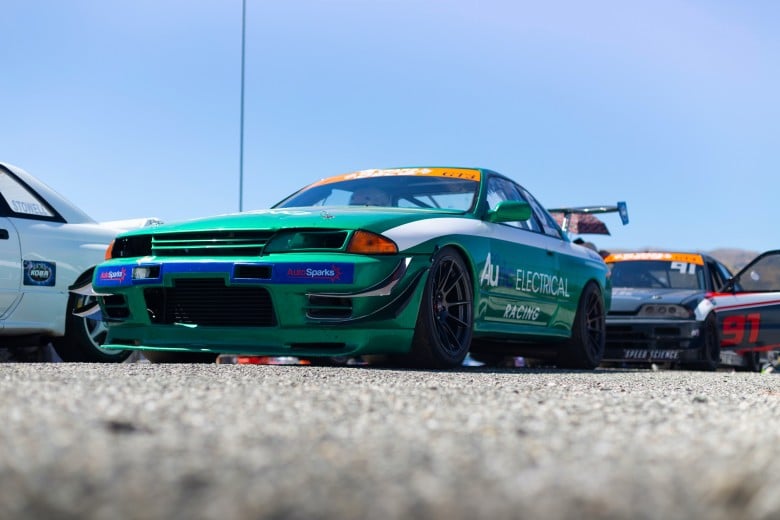
Final Note
There are other brands out there on the market that will do the same job as those listed above, we just simply can’t test everything and when recommending anything we also consider the pre and post-sales service and support we receive from the manufacturers we deal with.
With that in mind these are just some of the tools we have personally used, have been more than satisfied with and as such feel comfortable recommending them to you to help you make your own decision on what is the best fit for you personally.
If you want to learn how to use all of these tools and more correctly to do your own string alignments, enrol in the Motorsport Wheel Alignment course here and start learning instantly.
